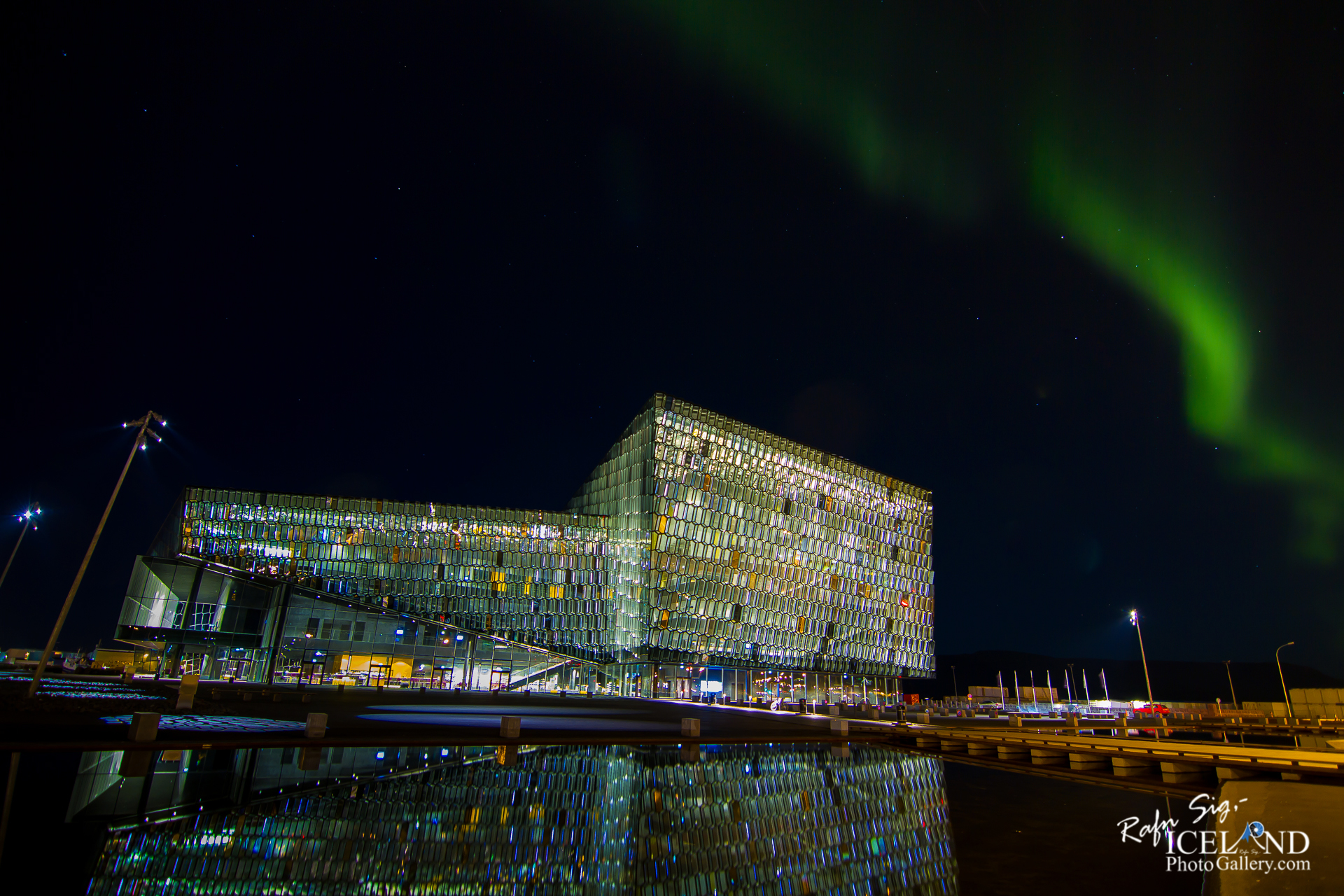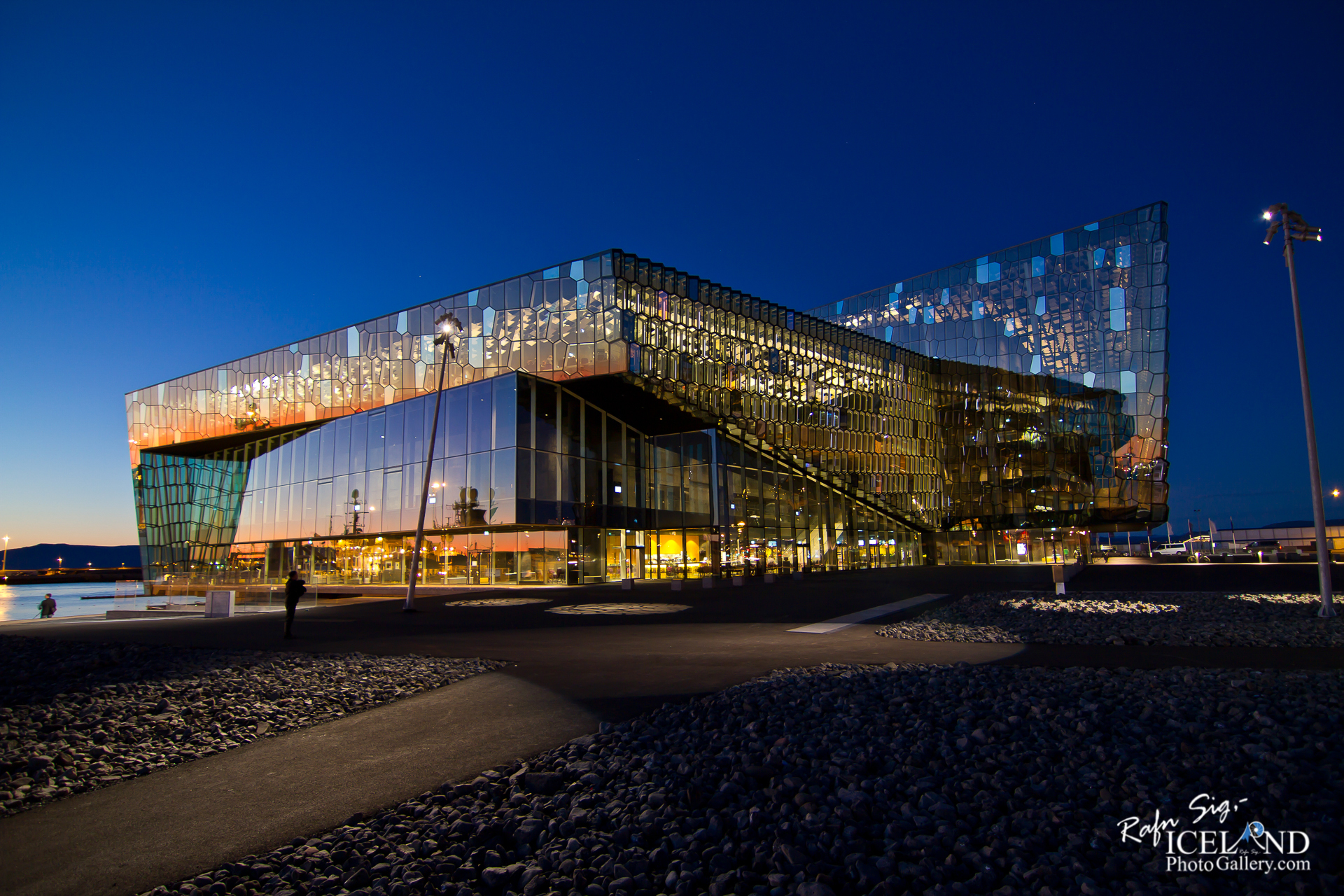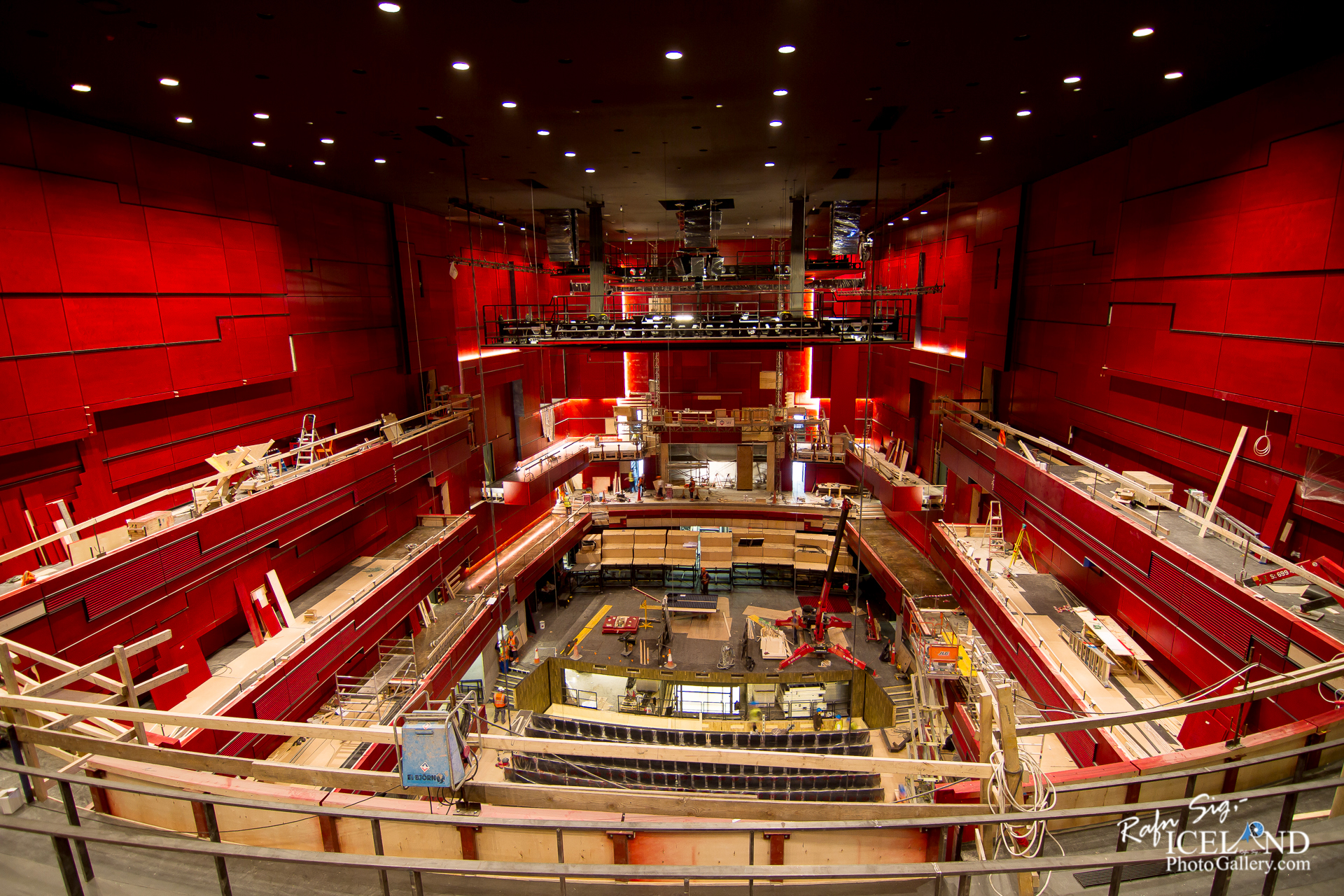2022-01-07
Harpa – Conference and Concert halls │ Iceland Photo Gallery
Documenting Iceland
by: Rafn Sig,-

Harpa er tónlistar- og ráðstefnuhús í Reykjavík, nánar tiltekið á austurbakka Reykjavíkurhafnar, fyrir neðan Seðlabanka Íslands. Byggingin er hluti af stærri framkvæmd sem átti upprunalega að fela í sér 400 herbergja hótel, viðskiptamiðstöðina World Trade Center Reykjavík, nýjar höfuðstöðvar Landsbankans, verslanir, íbúðir, veitingahús, bílastæðahús og göngugötu. Verkið var boðið út af ríki og borg og að útboði loknu kom athafnamaðurinn Björgólfur Guðmundsson að fjármögnun byggingar Hörpu en eftir bankahrunið 2008 þurfti Reykjavíkurborg að hlaupa undir bagga. Hætt var við viðskiptamiðstöðina, hótelið og bankabygginguna. Bílastæðahúsið varð minna en upphaflega var gert ráð fyrir. Um mitt ár 2010 var áætlað að heildarkostnaður frá upphafi næmi um 27,7 milljörðum.
Kjallarar hússins, m.a. þar sem bílakjallarar eru, eru að hluta undir og við sjávarborð. Sérstakar ráðstafanir voru gerðar til að koma í veg fyrir að loftfyllt byggingin flyti upp. Einnig var gert ráð fyrir hækkun yfirborðs sjávar vegna loftslagsbreytinga. Upphaflegar teikningar gerðu ráð fyrir að umferð bíla fram hjá svæðinu mundu að mestu fara neðanjarðar, til að tengja Hörpu betur við miðborgina. Seinna var fallið frá þessum áformum, að hluta vegna kostnaðar. Þegar leið á byggingartímabílið, var stígur gangandi og hjólandi sem lá norðanmegin Kalkofnsvegar skorinn, á meðan fjögurra akreina akvegur var látin halda sér mestan hluta byggingartímabilsins.
Tónlistar og ráðstefnuhúsið er hannað af teiknistofunni Batteríið arkitektar og Teiknistofu Hennings Larsens í Danmörku og stór glerhjúpur sem umlykur bygginguna er hannaður af Ólafi Elíassyni.
Sinfóníuhljómsveit Íslands og Íslenska óperan hafa aðsetur í húsinu.
Húsið var tímabundið kallað Tónlistar- og ráðstefnuhúsið í Reykjavík en fékk síðan nafnið Harpa á degi íslenskrar tónlistar 11. desember 2009.
Fyrstu tónleikarnir voru haldnir 4. maí 2011, en þar flutti Sinfóníuhljómsveit Íslands 9. sinfóníu Beethovens undir stjórn Vladímírs Ashkenazys. Opnunartónleikar voru haldnir 13. maí, en næstu tvo daga var opið hús með fjölbreyttri tónlistardagsskrá og komu þá um 32 þúsund manns í húsið eða um tíundi hluti íslensku þjóðarinnar.
Harpa was designed by the Danish firm Henning Larsen Architects in co-operation with Danish-Icelandic artist Olafur Eliasson. The structure consists of a steel framework clad with geometric shaped glass panels of different colours. The building was originally part of a redevelopment of the Austurhöfn area dubbed World Trade Center Reykjavík, which was partially abandoned when the 2008 Icelandic financial crisis took hold. The development was intended to include a 400-room hotel, luxury apartments, retail units, restaurants, a car park and the new headquarters of Icelandic bank Landsbanki. As of 2015, apart from Harpa, only the hotel looked likely actually to be built.
Construction started in 2007 but was halted with the start of the financial crisis. The completion of the structure was uncertain until the government decided in 2008 to fully fund the rest of the construction costs for the half-built concert hall. For several years it was the only construction project in existence in Iceland.[2] The building was given its name on the Day of Icelandic Music on 11 December 2009, prior to which it was called The Reykjavík Concert Hall and Conference Centre (Icelandic: Tónlistar- og ráðstefnuhúsið í Reykjavík). The building is the first purpose-built concert hall in Reykjavík and it was developed in consultation with artistic advisor Vladimir Ashkenazy and international consultant Jasper Parrott of HarrisonParrott. It houses the Iceland Symphony Orchestra and the offices of The Icelandic Opera.
In the opening concert on 4 May 2011, Iceland Symphony Orchestra performed under the baton of Vladimir Ashkenazy with the Icelandic pianist Víkingur Ólafsson as soloist. The concert was broadcast live on RÚV, the Icelandic National Broadcasting Service. In the water next to Harpa is located the sculpture The Musician (1970) by the Icelandic sculptor Ólöf Pálsdóttir. The statue is of a cellist playing, and is modelled on the Danish cellist Erling Blöndal Bengtsson, who played constantly for Ólöf as he sat for her.[9] When the Orchestra was based at its previous home at the Háskólabíó, the statue was located on Hagatorg, but it followed the Orchestra in 2014.
The Icelandic Opera performs at the concert hall even though the venue is primarily designed for concerts, lacking a curtain, proscenium, and any of the traditional stage machinery.
Harpa is operated by Portus, a company owned by the Icelandic government and the City of Reykjavík. . . . All info at: https://www.patreon.com/RafnSig
Subscribe to my Youtube Channel
You can buy this and other photos at my Icelandic Stock Photo Web: IcelandStockPhotos.com
As a native photographer I feel responsible to leave all I can behind to show how it looked like, with my photography, before it’s too late.








0 Comments